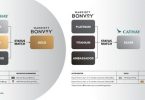TANZANIA (eTN) – There are signs that senior officials within the Tanzanian government, including unscrupulous security officers, are behind elephant poaching and trade on bloody ivory.
Members of Tanzania’s Parliamentary Committee on Land, Natural Resources and Environment have pointed a finger to senior government officials from key departments responsible for wildlife conservation and security officers for taking party in illegal poaching of African elephant and trade on bloody ivory.
Chairman of the Committee Mr. James Lembeli had this week expressed his Committee’s outcry to the government of Tanzania over the sharp rise of jumbo and rhino killing, but little action has been implemented other than promises from the minister responsible for wildlife protection and conservation.
He said senior officials from the government of Tanzania are benefiting directly from wildlife poaching, that is why anti-poaching campaigns fail to curb elephant and rhino killing, also illegal trade on live animals.
His committee raised serious questions to the government of Tanzania over its position in fighting killing of elephant and rhino, which poachers use high-caliber guns to gun them down, while others apply poisoned fruits to kill the African elephant.
Tanzania, an elephant slaughter house, is so far losing rapidly its elephant population as poaching continues unabated. The committee pointed an accusing finger to a section of military and senior police officers for running poaching and illegal trade on bloody ivory.
The Committee members said it is difficult to know the exact number of elephants killed in Tanzania every year, but reports from independent conservation charities show an average of 850 elephants killed every year inside protected parks.
It is estimated that only 70,000 elephants are living in key protected areas today. A census carried in 2009 counted 109,000 elephants in those areas (protected parks).
Last year, the Committee rejected a doctored document and a report on the status of elephant poaching in Tanzania and which was submitted to its members for discussion before the parliament.
Committee members turned it down, saying it contained outdated data and failed to portray the prevailing situation on elephant killing and illegal trade on bloody ivory.
While elephant poaching in Tanzania remain a big problem to wildlife conservationists, reports from neighboring Kenya, the other African elephant breeding nation said a container loaded with ivory and that was seized in Singapore had been shipped back to Kenya.
The container, loaded with elephant tusks had earlier disappeared mysteriously, but later recovered through tough efforts by Kenyan authorities. The consignment is expected at Kenyan port of Mombasa this week.
It is known that poachers in both Tanzania and Kenya cooperate to hunt elephants and carrying out the ivory business. Kenya and Tanzania share borders in several wildlife protected parks where elephants cross to look for pastures.
Key protected parks shared between Kenya and Tanzania and where elephants share their ecosystems are the Tsavo West and Mkomazi National Park, Amboseli National Park and Kilimanjaro National Park, Maasai Mara Game Reserve and Serengeti National Park.
Reports from Kenyan capital of Nairobi said the Kenyan President Mr.
Uhuru Kenyatta will visit China early next week, an official tour which wildlife conservationists are looking to pressure him to sign an agreement with Chinese government targeting to ban ivory trade.
Conservationists from East Africa are seriously lobbying to see Mr. Kenyatta speak out poaching problem with his Chinese hosts.
The Kenyan president’s trip comes at a time when China has had to defend itself against claims that it has a hand in poaching. A report by Elephant conservation organizations pointed a finger at China as among the major destinations of illicit ivory and rhino horn from Africa.
Conservation report links sharp rise in elephant poaching to influx of Chinese workers migrating to East Africa. The large number of Chinese workers employed in the construction industry in Kenya could be fueling poaching and ivory smuggling, the report said.
The report compiled by the Convention on International Trade in Endangered Species (CITES), Monitoring the illegal Killing of Elephants (MIKE), Elephant Trade Information System (ETIS) and other conservation organizations said China and Thailand were two Asian major markets where the bloody ivory finds its open markets.
Defending his country, Chinese ambassador to Kenya Mr. Liu Guanvuan said China and Kenya would strengthen cooperation on wildlife conservation.
Another official from the Chinese embassy in Nairobi was quoted blaming Kenyan government officials on rampant poaching and ivory smuggling as fueled through corruption in state agencies within the Kenyan government itself.
He said no Chinese company has been linked to poaching or any Chinese or Asian people were arrested in Kenya over poaching of African jumbos.



![China's Hyperloop Train: A Glimpse into the Future of Transportation 1 Travel Tourism News | Domestic & International Hyperloop Train China [Photo: Hyperloop Transportation Technologies]](https://eturbonews.com/wp-content/uploads/2024/02/180720163348-hyperlooptt-china-capsule-145x100.jpg)


















